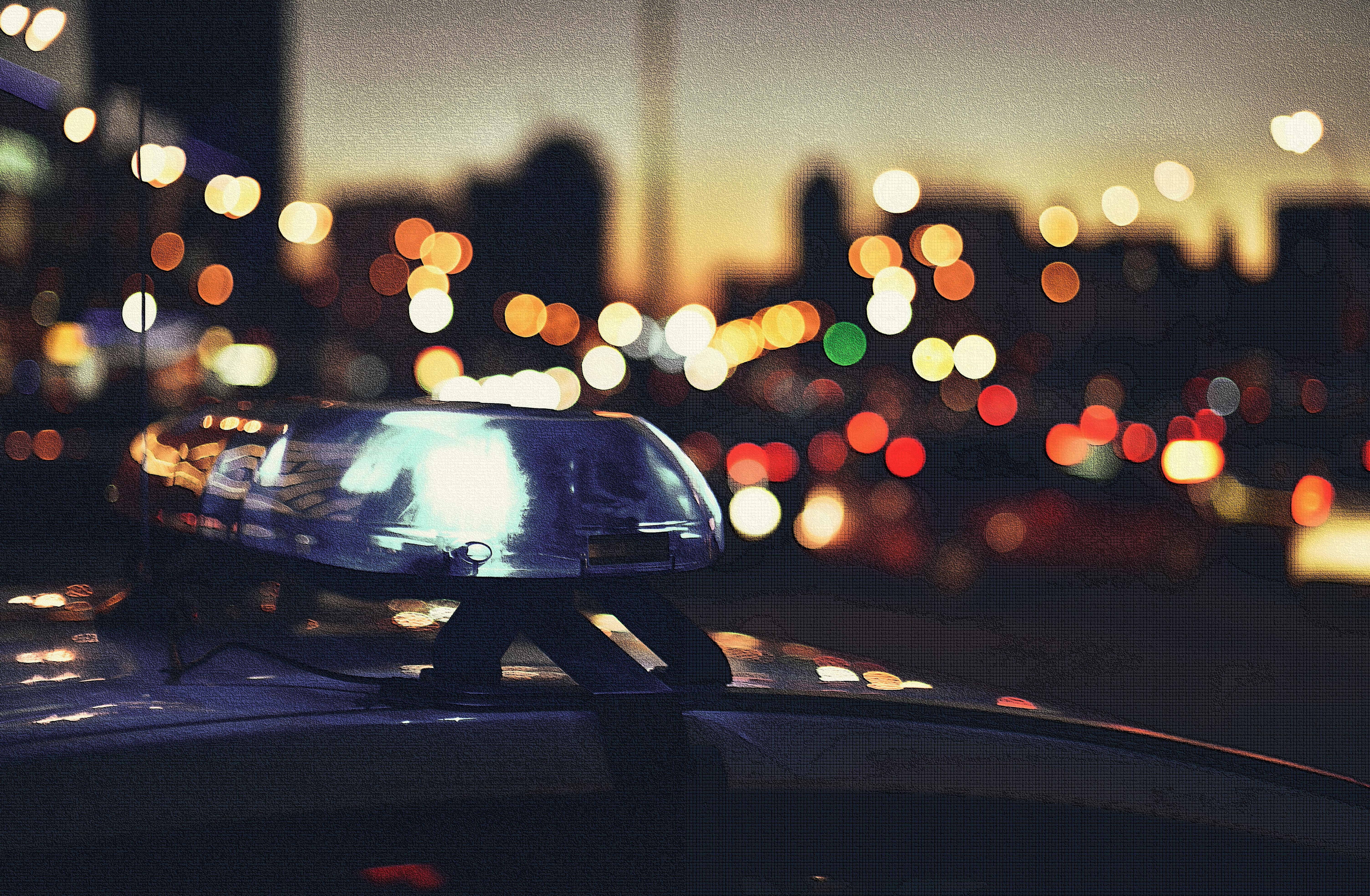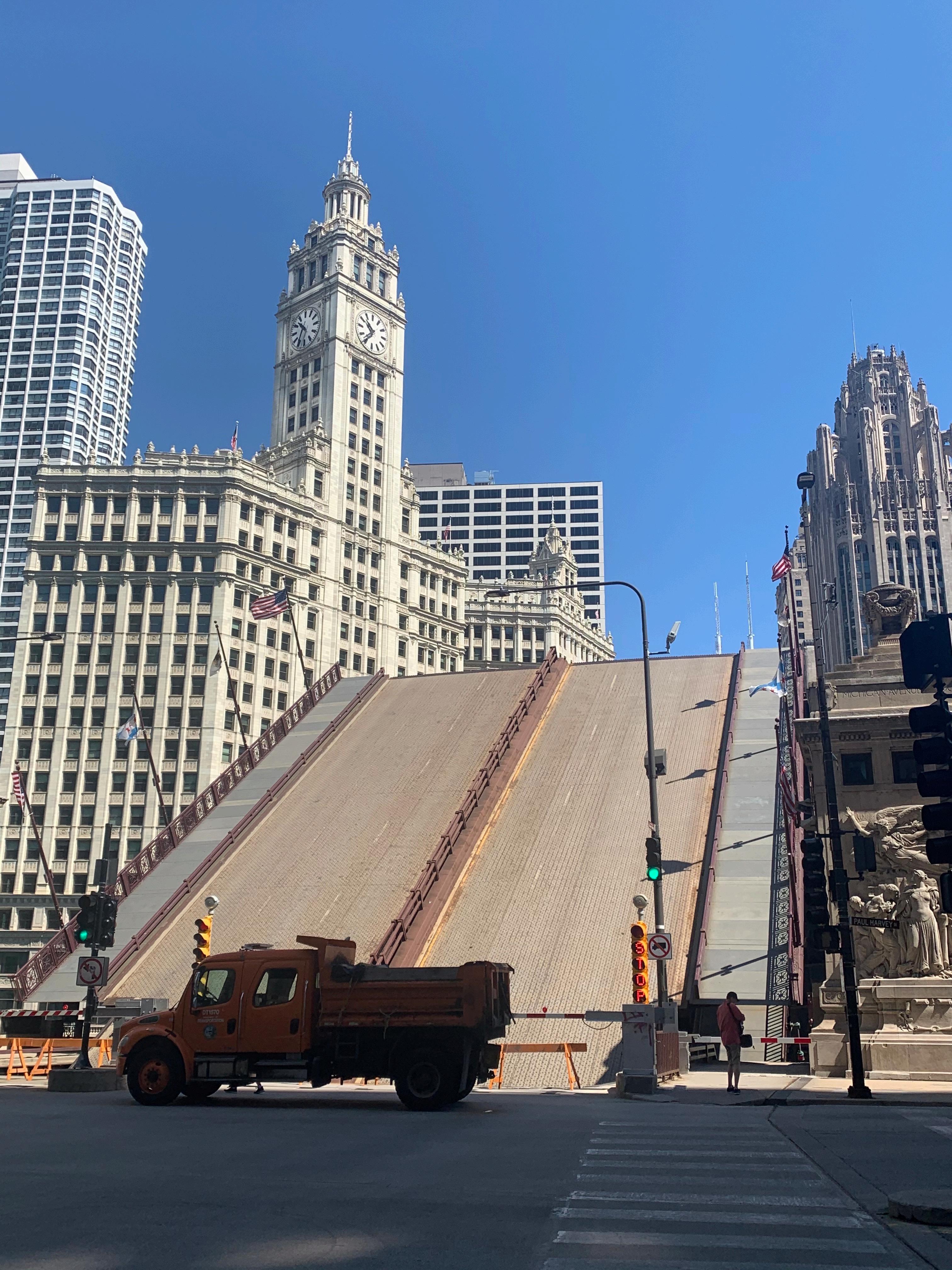
Chicago, Illinois May 31, 2020



Chicago, Illinois May 31, 2020

They say a picture can say a thousand words. Well for me on a personal level, the picture of Chicago on the opening page of this short introduction may say even more. It’s a picture of my adopted hometown of Chicago, Illinois.
And in many ways, the picture seemed to capture the essence of Chicago at that time - both a literal and figurative shutdown of my city.
Just across that drawbridge is Chicago’s infamous Magnificent (Mag) Mile, Michigan Avenue. A famed stretch of real estate that hosts some of the finest shopping, food and other tourist attractions yearround. Yet on that day and week in 2020, Chicago had decided that nobody would be going to Mag Mile. Indeed, as a practical matter, nobody would be going anywhere.
I took this picture just after the George Floyd tragedy and the protests that occurred in the aftermath. By the time I took this drawbridge photo, the National Guard had been brought into the city. And drawbridges throughout the city had been raised to cut off access to the city’s center from just about every angle.
Surreal may be an overused word these days, but there may not be a more apt description when describing the city that morning. And one couldn’t also help but think that those drawbridges were the perfect metaphor for the state of our country’s discourse of the day. Instead of talking with one another, let’s just cut the whole damn thing off.
And of course, just beneath this simplistic observation lies the harder truths that become entangled with topics like law enforcement in our urban centers and with that, all the underlying historical, societal, racial and economic entanglements.

Tricky as this topic may be in that regard, we had actually made the decision to incorporate law enforcement as a topic for our new Back of the Yards comic series long before the events of 2020. We made this decision because we, as project collaborators ourselves, wanted to learn more about the topic.
And as a very practical matter, we knew we couldn’t continue our comic-based narrative, based in our fictional Back of the Yards neighborhood in the South Side of Chicago, without incorporating law enforcement into the ongoing narrative in some central way. And when the events of 2020 occurred, and the corresponding protests, we felt these collaborations were even more relevant, and timely.
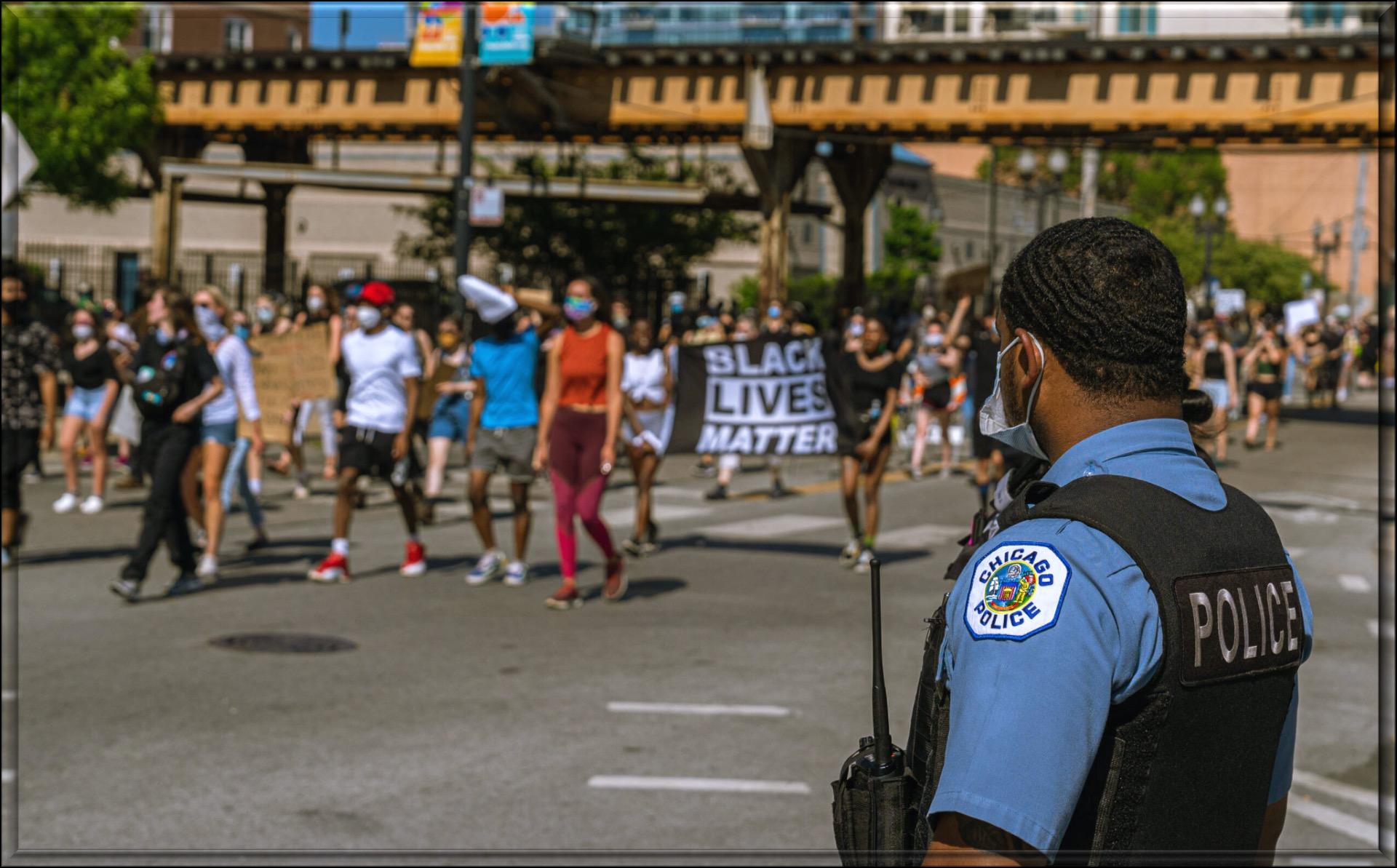
To help facilitate this new collaboration, we will be covering various topics related to law enforcement & community relations, together with your input. We’ll start this ongoing collaboration with a peek at the origins of our modern police forces, eventually transitioning to some of the many challenges our police forces face today, and then focus on the impact of those challenges within our black and brown communities.

And as we cover these various topics, we hope to not only collaborate with urban youth and their academic administrators, but also other subject matters experts along the way, and perhaps no more important in that regard than those on the very front lines we speak of, our police officers.
That’s the hope anyway. But we’ll see exactly where this collaboration goes together. For now, to help set a stage for this collaborative discussion, we will take a quick peek into the origins of the modern-day police force.
And as turns out, that origin story starts with some guy named Robert Peel. Robert who, you ask? Well just turn the page and we’ll dive right into it.
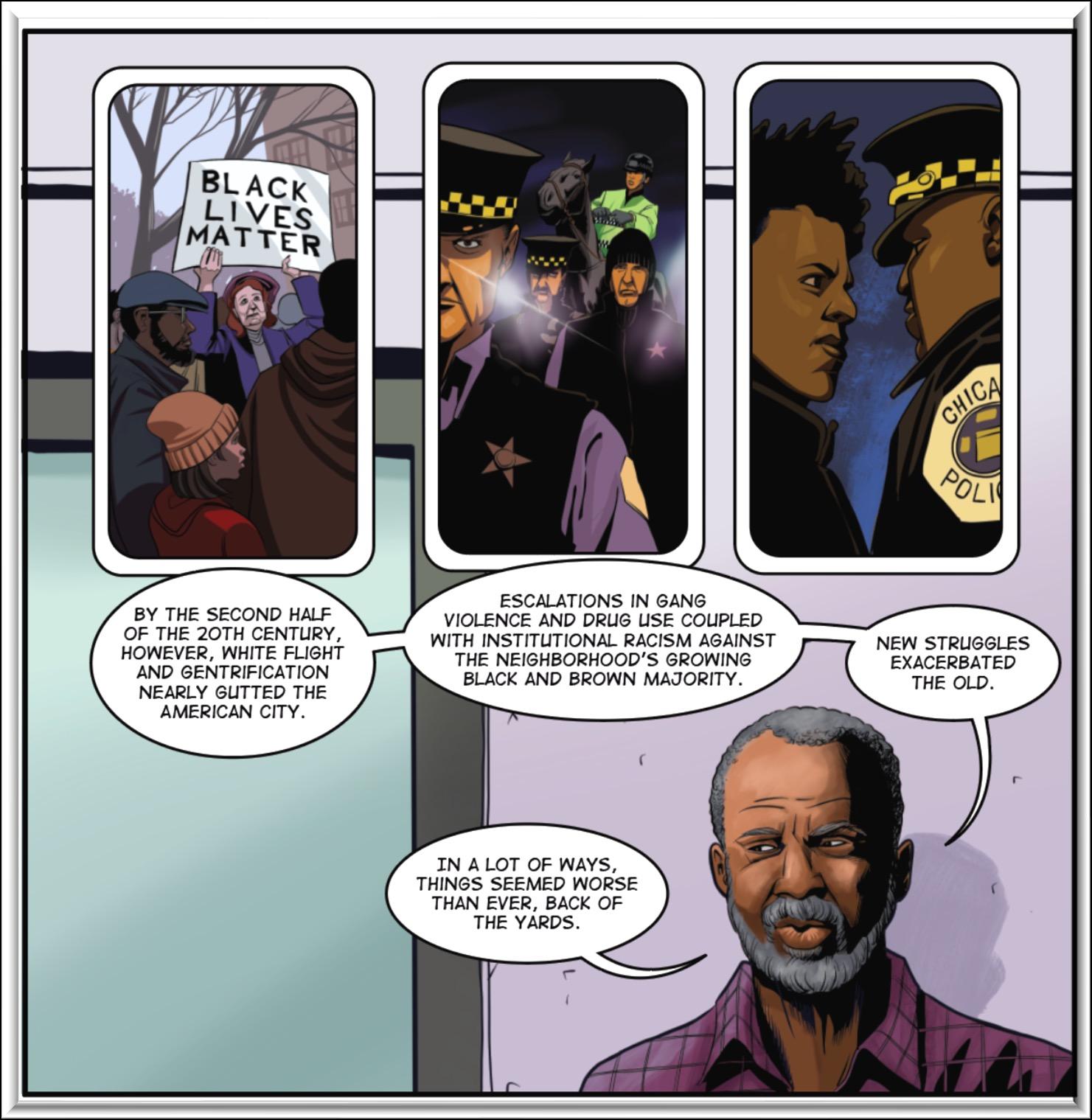

An except from a comic feature within the Back of the Yards comic, Issue #1, written by Len Kody and illustrated by Dan Dougherty.
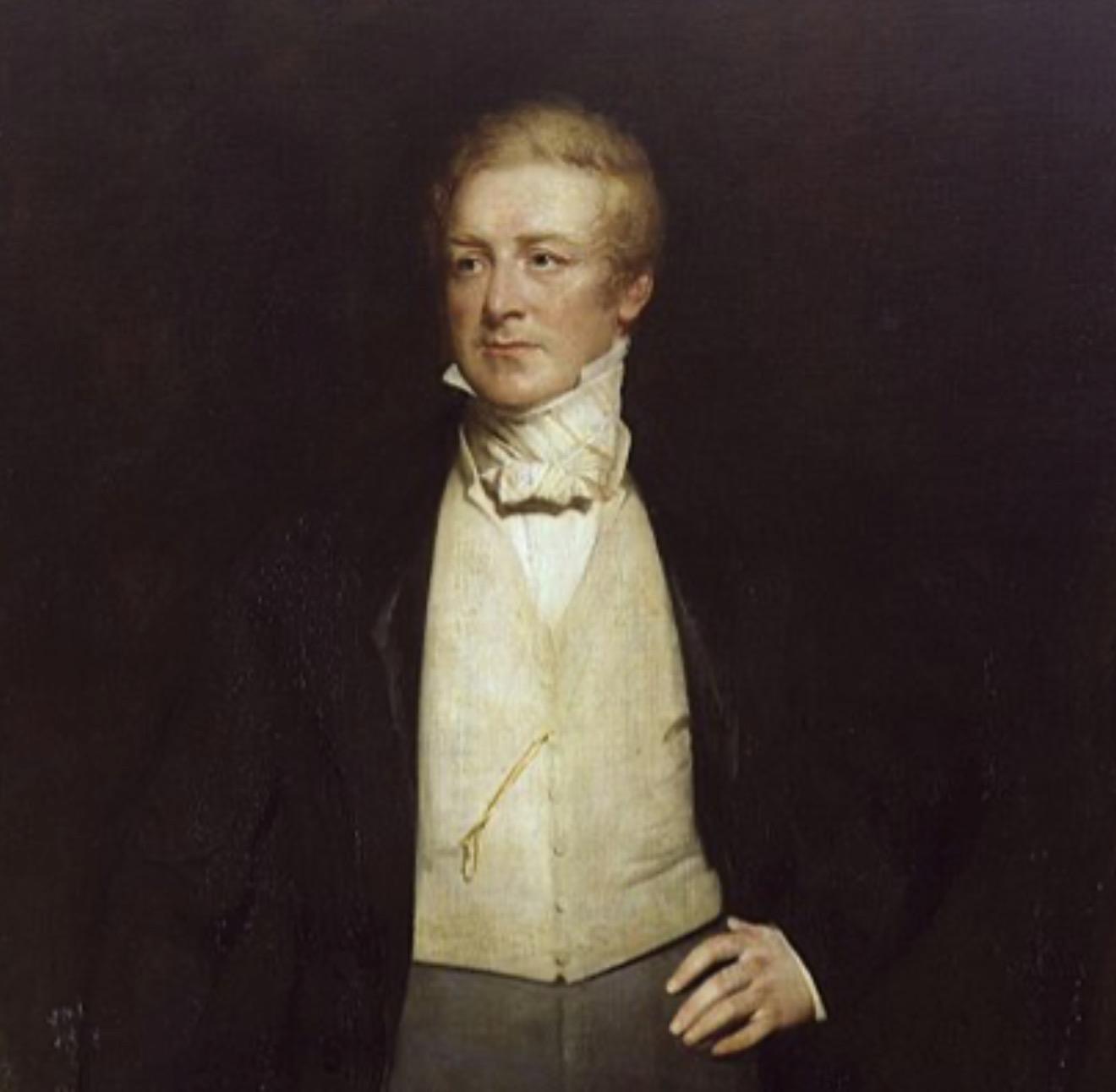
Born: February 5, 1788, Bury, United Kingdom
Died: July 2, 1850, Westminster, London, United Kingdom

So apparently today’s modern police force in America owes a lot to a guy named Robert Peel.
Sir Robert Peel, that is.
Our man Peel was born on the other side of the pond, as they say, making his bones in Lancashire, England. He was the son of a wealthy and politically influential textile manufacturer. And from the foundation his father built, Peel would go on to prove to be a pretty, pretty smart guy in his own right, matriculating (fancy way of saying “attending”) the Christ Church at Oxford, studying the classics and mathematics. Check out thebig brain on Bob!
From there our man Peel would ultimately go on to be instrumental in creating and facilitating the passage of the first comprehensive set of policing regulation in England – the Metropolitan Police Act of 1829 (you can learn more about this Act on Slide 9 of this presentation). And it is because of Peel’s role in developing and passing the Metropolitan Act of 1829 that even today he’s considered to be the father of the modern British police.
So, why is this important to us? Well, because that Act would ultimately be the model from which many American cities would soon thereafter adopt their own policing models.
See, before Sir Peel came along with his Metropolitan Police Act of 1829, America was just sort of employing a ragtag set of community policing initiatives from village to village.
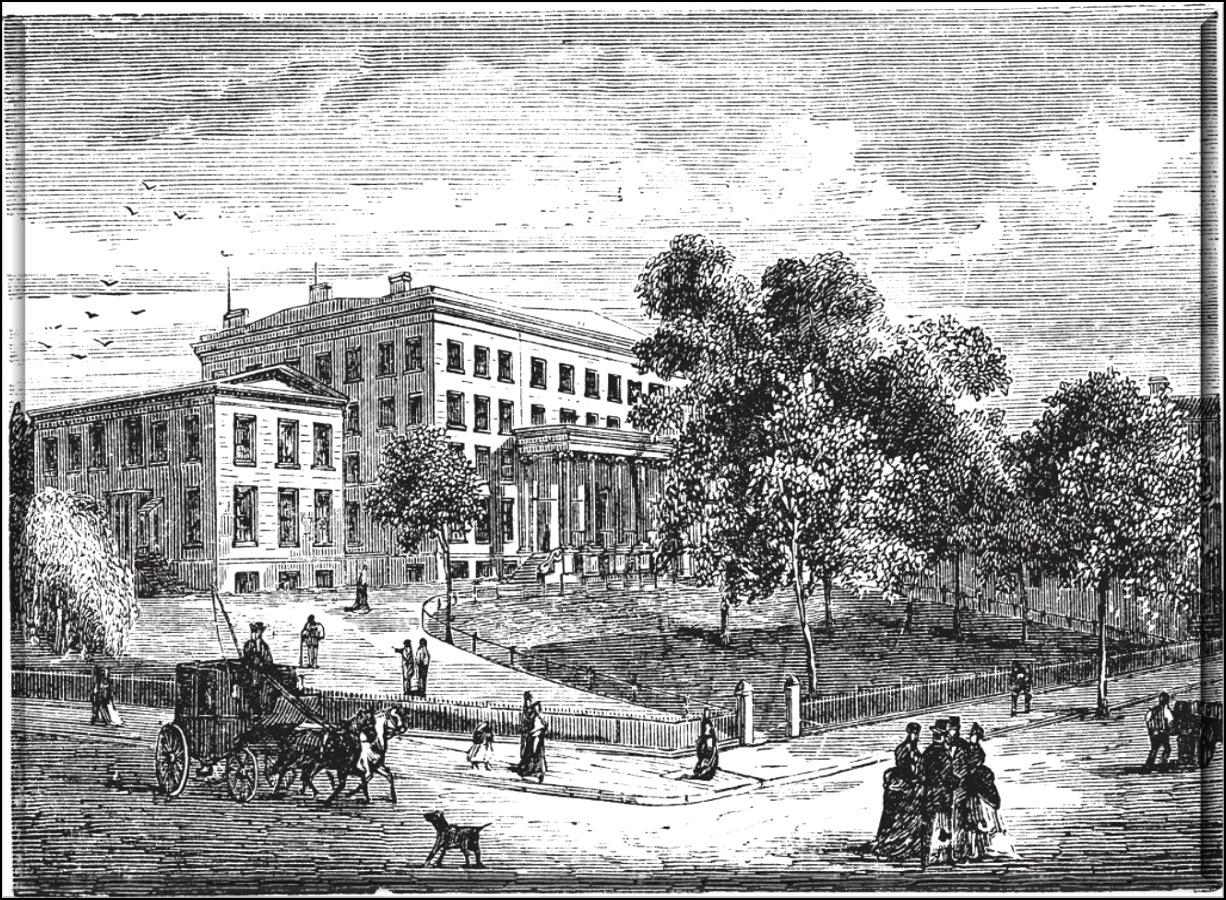

In the Northern colonies, these forces came in the form of “night watches.” By ordinance, these “night watches required “able-bodied” men to take a turn on periodic night patrols. And technically, I think I would have qualified as “able-bodied,” which is all I need to know about just how utterly ineffective this policing system would have been back in the day.
Also, during that same time, reflecting a somber reality of our country’s history, the Southern colonies implemented “slave patrols.” These “slave patrols” were apparently more organized than their northern “watchmen” counterparts, owing primarily to their profoundly ominous origins to control and subjugate slaves on behalf of the ruling owner class of the time. This, of course, is part of a broader narrative that our country struggles to reconcile against its more idealized aspirations of both yesterday and today.
And further west in America during that time? Well, all bets were off. They called it the “wild west” for a reason. Shit was crazy. And the whole notion of a police state was contrary to everything those that migrated West stood for, which was based on exploration, freedom and escaping all the bat shit craziness in the North and South at the time (see above).
“Washington is not a place to live in. The rents are high, the food is bad, the dust is disgusting and the morals are deplorable. Go West, young man, go West and grow up with the country.”
— attributed to Horace Greeley, New-York Daily Tribune, July 13, 1865

So, it was with this backdrop that our main man Peel changed the whole game worldwide. He was like Michael Vick or Lamar Jackson. He brought his vision of a more organized state-backed police force to reality by deftly side stepping the political pocket of the time.
Peel’s opponents at the time feared that an organized police force backed by the state would be susceptible to tyranny, corruption and inevitable militarization. But Peel, like so many others back then and perhaps even today, believed that development of any modern society was ultimately dependent upon the protection of life and property.
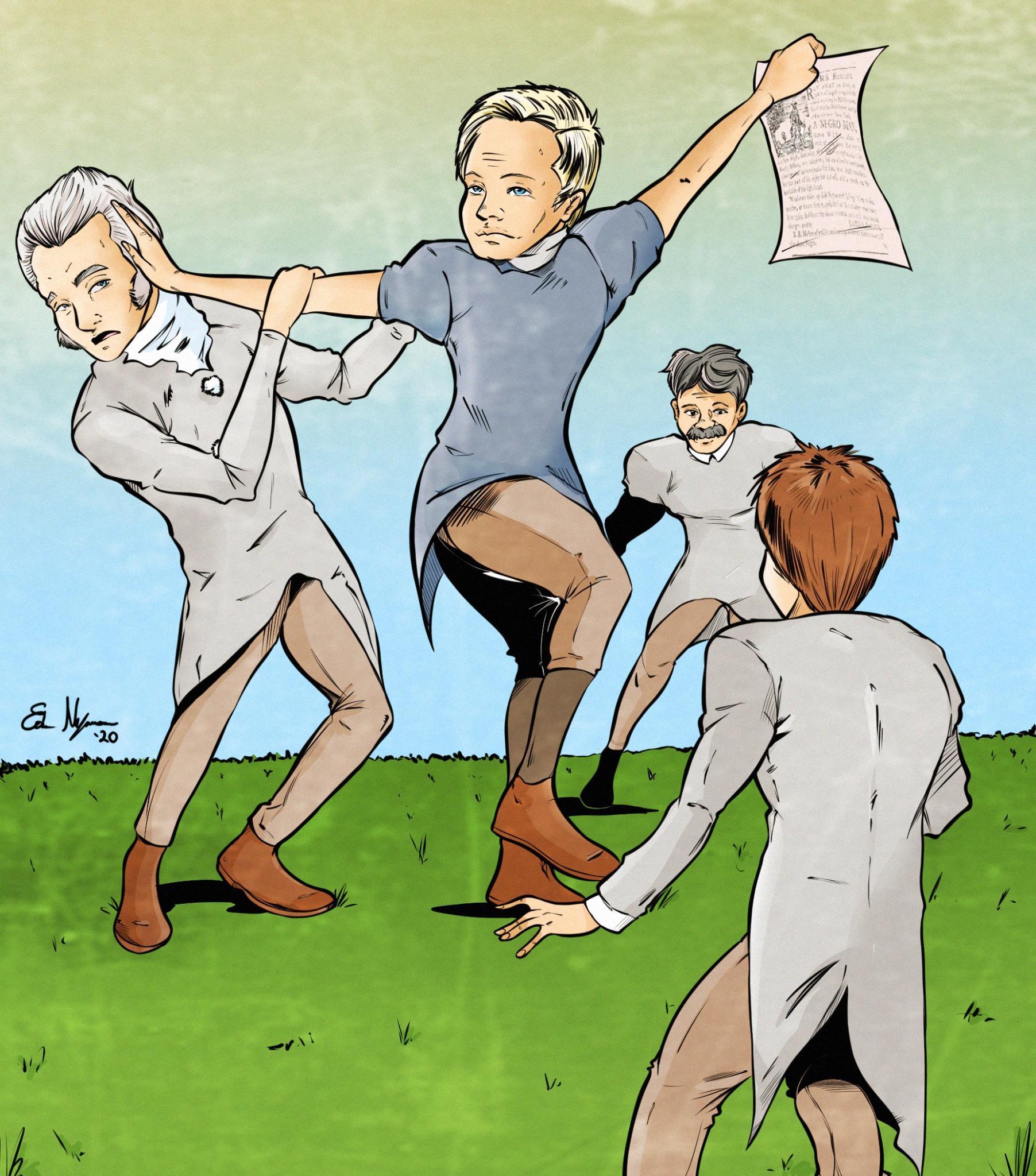
Of course, security is one of Maslow’s fundamental needs for individuals, let alone an entire society. And this is particularly true for those who had already something to lose, in the form of property or otherwise, i.e., the rich upper class.
So it was, in 1829, with the support of that very upper class, England granted Peel his wish and the first comprehensive police force was established. And from there, cities like New York, Philadelphia, Boston and Chicago would eventually follow, creating their own police forces in varied forms.

And true to the independent spirit of the United States, each city just sort of did their own damn thing, adopting whatever they liked from Peel’s act, and sprinkling in their own local predilections at the time … for better or for worse, which we will get into a later time.
Turns out Sir Robert Peel was just getting started when he marshalled through his Metropolitan Police Act of 1929. Peel would go on to serve twice as Prime Minister of England. Look up Peel in Wikipedia, and you will see the following among other accolades:
“The great Conservative patriot: a pragmatic gradualist, as superb in his grasp of fundamental issues as he was adroit in handling administrative detail, intelligent enough to see through abstract theories, a conciliator who put nation before party and established consensus politics.”
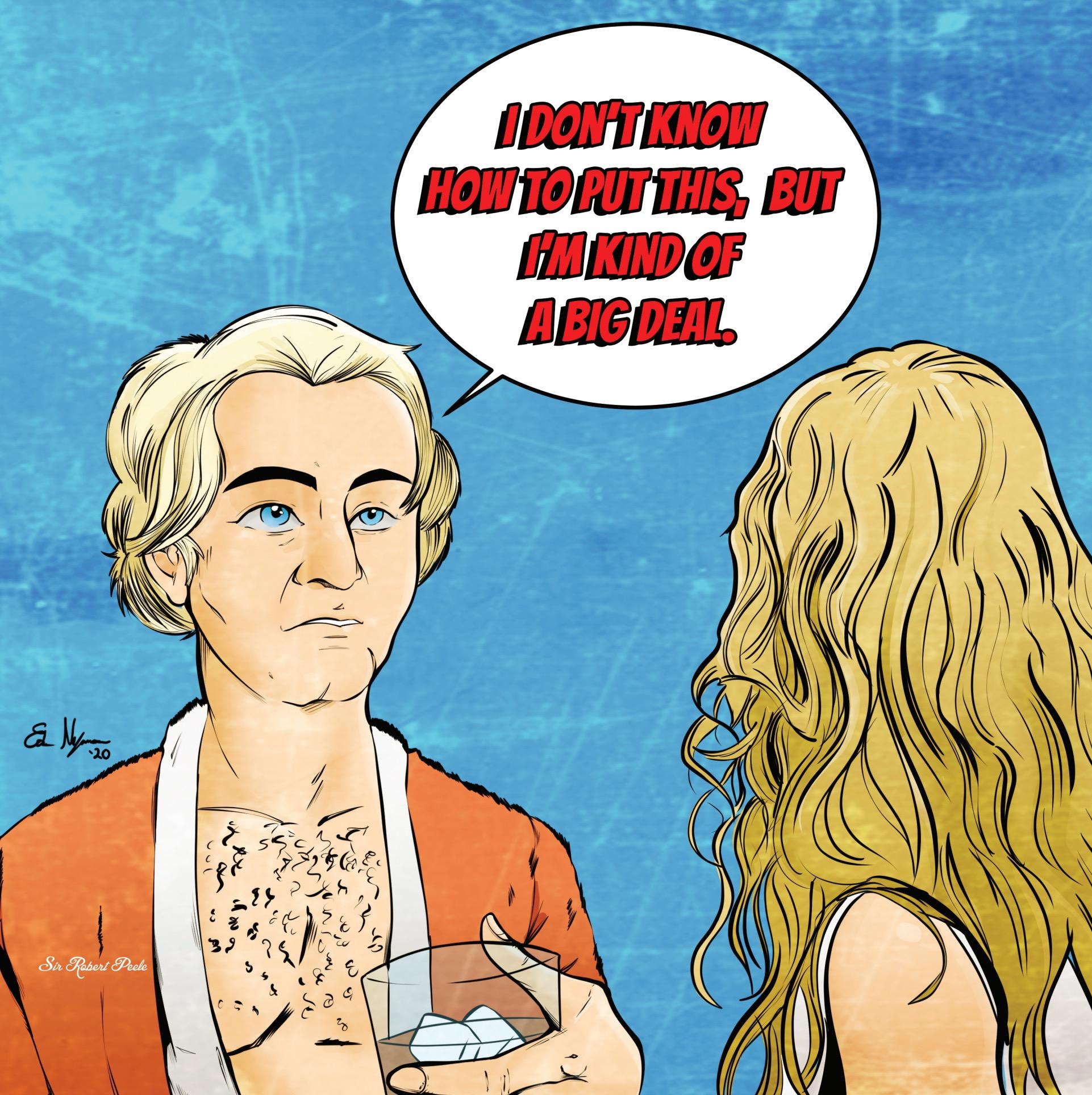

And even today, Peel’s legacy lives on within many of our most established police units through what are known as Peel’s Nine Principles for effective policing.
Hear ye, hear ye! We present to you Peel’s Principles:
Principle 1
“The basic mission for which the police exist is to prevent crime and disorder.”
Principle 2
“The ability of the police to reform their duties is dependent upon public approval of police actions.”
Principle 3
“Police must secure the willing cooperation of the public in voluntary cooperation of the public in voluntary observance of the law to be able to secure and maintain the respect of the public.”
Principle 4
“The degree of cooperation of the public that can be secured diminishes proportionately to the necessity of the use physical force.”
Principle 5
“Police seek and preserve public favor not be catering to the public opinion by constantly demonstrating absolute impartial to the law.”

Principle 6
“Police use physical force to the extent necessary to secure observance of the law or to restore only when the exercise of persuasion, advice and warning is found to be sufficient.”
Principle 7
“Police at all times, should maintain a relationship with the public the gives reality to the historic tradition that the police are the public and the public are the police; the police being only members of the public who are paid to give full-time attention to duties which are incumbent on every citizen in the interests of community welfare and existence.”
Principle 8
“Police should always direct their action strictly towards their functions and never appear to usurp the powers of the judiciary.”
Principle 9
“The test of police efficiency is the absence of crime and disorder, not the visible evidence of police action in dealing with it.”
One thing you might notice when you read Peel’s Principles is that they could serve as a doctrine of sorts for community policing. At their core, these principles are fundamentally aspirational. They seem to define the standard that we’d expect from those that we authorize to use force to keep the peace. A higher calling.

We as project administrators all have friends that are police officers. Friends and families that we deeply admire. Friends who we believe aspire to Peel’s Principles, even if implicitly.
At the same time, just yesterday as we write this very entry, there were protests throughout our hometown of Chicago calling to “defund the police” in response to the tragedies of George Floyd and the many others gun down by police, including Chicago’s own Laquan McDonald.
When confronted with these tragedies, a common refrain from many is that “most cops are good cops.” Well, on that score, we couldn’t agree more. Our friends are good cops. They are good to their families and friends. And we know they are committed to their communities. And we can’t imagine being in their shoes given the challenges they must confront on a daily basis.
But on some level, this also seems to be a red herring. The question is not whether most cops are good cops. The question is what then, assuming most cops are in fact good cops, is driving some of the systematic failures that we have witnessed? How do we even begin to reconcile
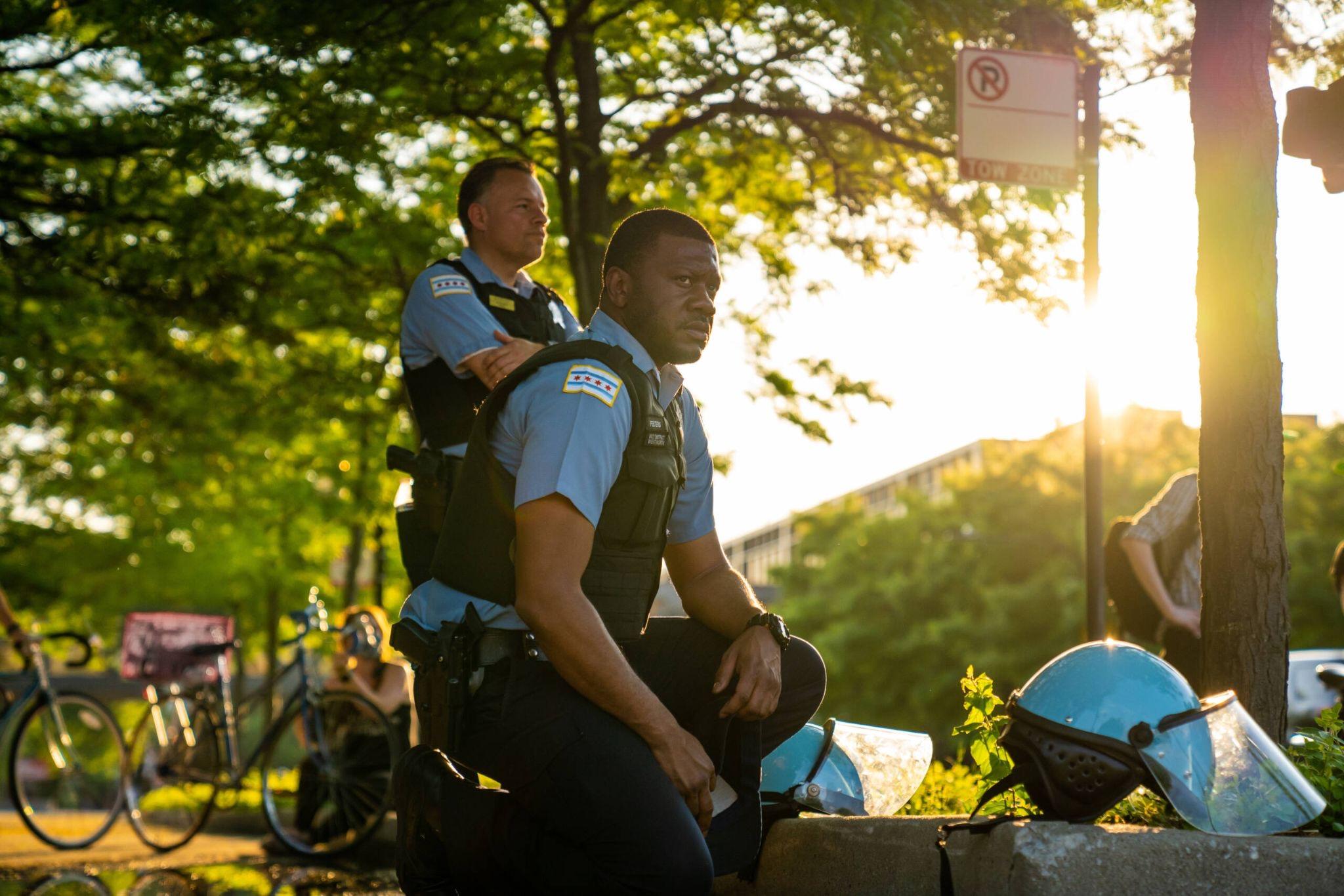
And just what would our man Peel think if he were alive today? Would he think that his esteemed Principles apply today? And if not, why not? These are the types of questions we hope to tackle through open and honest dialoguee and ultimately incorporate what we learn into the Back of the Yards Comic. these dueling realities?
